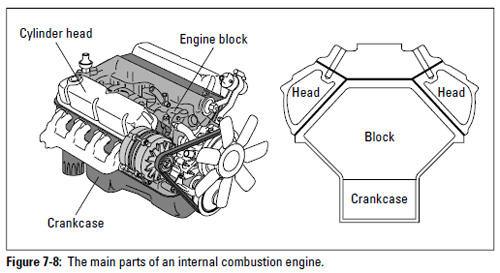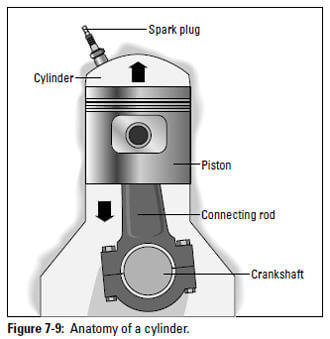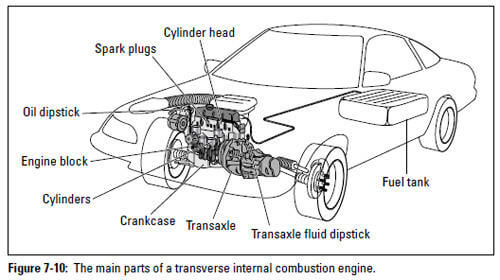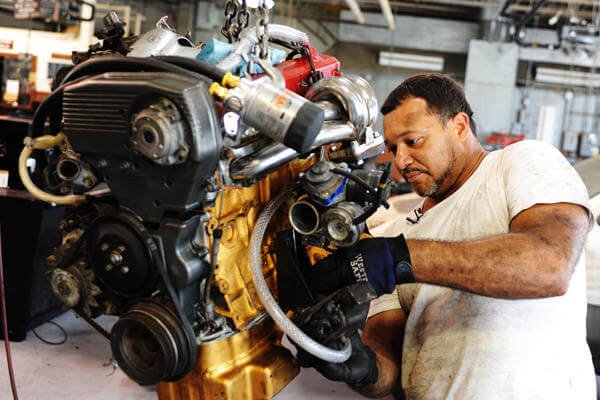Inside the engine are several fascinating parts, which you can see in Figure 7-8.
At the top are the cylinder heads. These contain the mechanisms that allow the valves to open and close, letting the fuel/air mixture into the cylinders and allowing the burnt exhaust gases to leave. Below the cylinder heads is the engine block itself. This piece contains the cylinders, which contain the pistons.

So what's a cylinder? It's a hollow iron pipe that's capped at one end and has a spark plug inserted into and through that cap so the plug's electrodes areavailable for action (see Figure 7-9).

The cylinders in the engines on vehicles with rear-wheel drive often run from the front of the engine back toward the firewall at the rear of the engine compartment. On other vehicles, particularly those with front-wheel drive, the cylinders in the engine are set sideways, parallel to the wheels. Theseengines are called transverse engines (see Figure 7-10).

Engines that have a single row of cylinders are called in-line engines (sometimes called straight engines). V-type engines have two parallel rows of cylinders set on an angle to each other. On rotary engines (found on some Mazdas), there's a single large internal chamber inside which a three-lobed, or triangular, rotor revolves. The rotor makes an eccentric or uneven revolution, continually forming smaller chambers in which occur the same four-stroke power cycleas in a conventional internal combustion engine.
Each cylinder has a number, determined by the particular engine's cylinder sequence.
Inside each cylinder is a metal piston that fits snugly against the walls of the cylinder so that nothing can get past it. On the outside of the piston are piston rings that ensure a snug fit. The cylinder also has other openings besides the ones for the spark plug and the piston. These are for the intake valves and the exhaust valves.
At the bottom of the engine is the crankcase, which houses the crankshaft and the oil pan. Coolant circulates throughout the engine to keep it cool, and oil circulates to keep the parts moving freely.
Now that you've met the "players," you're ready to get on to the main event in which they play their roles: the fiery meeting of air, fuel, and fire known as the four-stroke power cycle.
From Auto Repair for Dummies, copyright © 2009 by Wiley Publishing, Inc., Indianapolis, Indiana. Used by arrangement with John Wiley & Sons, Inc.










